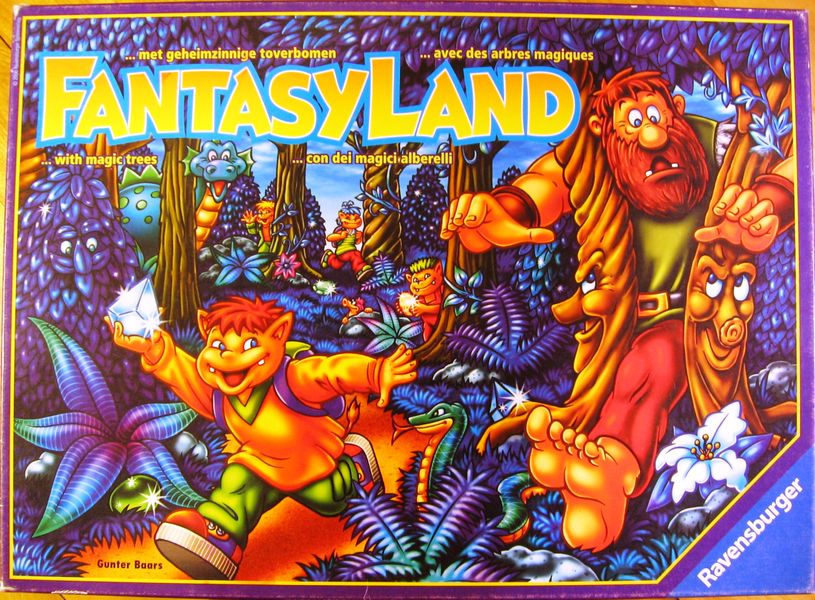Fantasyland (2000) Board Game
Fantasyland is a children’s board game released in 2000 by Ravensburger, designed by Gunter Baars. The game features a maze-like board where players must navigate through different pathways to collect treasures. With colorful artwork by Joachim Krause, Iris Schotten, and Thomas Weiss, Fantasyland aims to provide an engaging and fun experience for young players.
Game Components of Fantasyland
How To Setup Fantasyland
To set up Fantasyland, players first place the game board in the middle of the playing area. Each player chooses a token and places it at the starting point on the board. The rules and any additional components, such as dice or point trackers, are distributed according to the instructions.
Gameplay Mechanics and Game Objective
Player Experience
Fantasyland is designed to be an easy and enjoyable game for young children. The gameplay is straightforward, making it accessible to kids who are just starting to learn how to play board games. The theme, while not explicitly detailed, likely involves a fantastical or Disney-themed setting given the name.
Pros
Cons
Personal Thoughts on Fantasyland
Fantasyland is a great introduction to board games for small children. It teaches basic game mechanics in a fun and simple way, making it an excellent addition to any family game collection. However, due to its simplicity, it may not appeal to older children or adults looking for more complex gameplay.
We are supported by our audience. When you purchase through links on our site, we may earn an affiliate commission, at no extra cost for you. Learn more.

